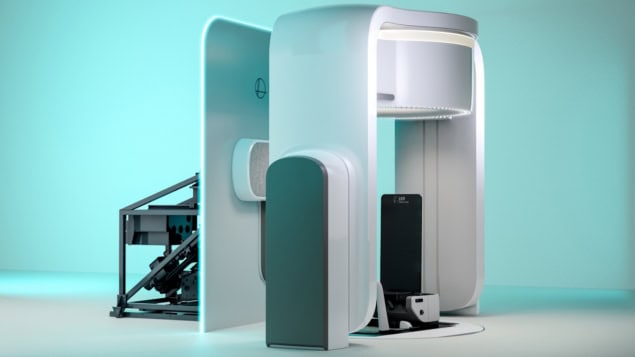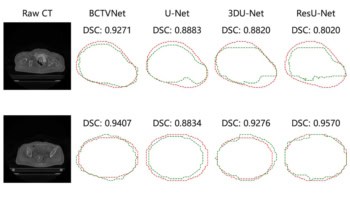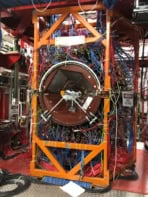
Leo Cancer Care is a trans-Atlantic company that’s pioneering the development of upright radiotherapy – a totally new take on radiation delivery in which the patient is treated in an upright position and rotated in front of a fixed treatment beam. At this week’s ASTRO 2025 meeting in San Francisco, the company introduced its first upright photon therapy system, named Grace, to an enthusiastic crowd in the ASTRO exhibit hall.
Upright treatments have a host of potential advantages over conventional radiotherapy, where patients typically lie on their back during treatment. Studies have shown that the more natural upright posture could deliver more consistent anatomical positioning and organ stability, as well as enabling more comfortable treatment positions, with patients who have experienced the technology reporting improved comfort and greater patient–therapist connection.
A fixed treatment beam also simplifies system design, reduces space and shielding requirements, and lowers infrastructure costs. And for proton therapy in particular, removing the need for a bulky and expensive gantry could help increase global access to advanced cancer treatments. Indeed, a partnership between Leo Cancer Care and Mevion Medical Systems led to the development of the MEVION S250-FIT, an ultracompact upright proton therapy system that fits inside a linac vault.
Moving on from Leo Cancer Care’s initial focus on proton therapy, the new Grace system will deliver conventional X-ray radiation therapy with patients positioned upright. Grace – named after American computer scientist and US Navy rear admiral Grace Hopper – comprises an upright patient positioning system (with six degrees of freedom and 360° continuous rotation) in front of a stationary 6 MV photon linac.
“Our future innovation, Grace, will take a proven technology, photon therapy, and rethink the way it can be delivered,” Sophie Towe, the company’s director of marketing, tells Physics World. “Upright treatment isn’t just about comfort; it’s about consistency, stability and ultimately accessibility. By integrating advanced CT imaging, faster beam delivery and a more natural patient position, we are opening the door to more adaptive and affordable care. Our goal is to show that innovation in radiotherapy doesn’t always mean bigger or more complex; it can mean smarter and more human.”
The system features a fan-beam CT scanner at the treatment isocentre, enabling planning-quality imaging throughout the entire treatment workflow. It also incorporates a large, ultrafast multileaf collimator that, in combination with the stationary photon beam delivery system, is designed to optimize dose conformity and treatment efficiency.

Hope or hype: can upright treatment increase access to advanced radiotherapy?
“Leo Cancer Care is already known for delivering upright particle therapy technology, and over the past few years we have seen a real paradigm shift as a result,” says co-founder and CEO Stephen Towe in a press statement. “Grace represents a return to our original company focus of delivering more cost-effective photon treatments to a global stage without sacrificing on treatment quality. Our technology has always been bold, but we are pioneering with purpose and that purpose is to put the patient truly back at the centre of their treatments.”
The company will install the first pre-commercial Grace systems at healthcare institutions within the Upright Photon Alliance research collaboration, which include Centre Léon Bérard, Cone Health, IHH Healthcare, Mayo Clinic and OncoRay.



